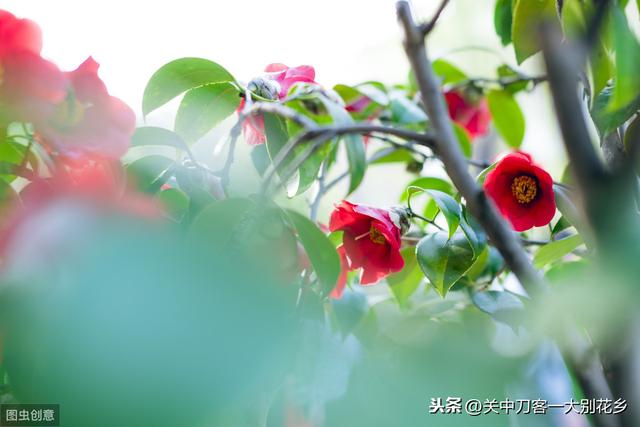利用英语和汉语拼音一个小时玩转世界语发音和语法

Alphabet(字母)
The Esperanto alphabet consists of 28 letters: a, b, c, ĉ, d, e, f, g, ĝ, h, ĥ, i, j, ĵ, k, l, m, n, o, p, r, s, ŝ, t, u, ŭ, v, z.
世界语有28个字母。实际上就是拉丁字母,只是有几个是通过上加符号表示其它的音素。
Note the following differences from English(请注意以下与英语的区别):
- a as in "father",如英语单词father中的a,对应汉语拼音中的a。
- c = ts as in "Betsy",相当于英语中的ts组合,德语中的z,对应汉语拼音中的c。
- ĉ = ch as in "church",对应英语中的tch和绝大多数的ch,德语中的tsch,西班牙语中的ch,意大利语位于e、i、y前的c,汉语拼音中的q。
- e as in "there",世界语中的e读[e],对应汉语拼音中“为wei”中的e。
- g as in "give",对应拉丁语、意大利语、西班牙语、英语中的g,汉语“哥哥”中读轻声的g。
- ĝ as in "judge",对应英语单词judge中的j,接近汉语拼音中的j。
- h as in "hammer",对应拉丁语、德语、英语中的h。
- ĥ = Scottish ch as in "Loch",对应国际音标[x],西班牙语中的j,汉语拼音中的h。
- i as in "machine",对应英语单词machine中的i,汉语拼音中的i。
- j = y as in "yes". aj, ej, oj, uj are diphtongs consisting respectivel of a, e, o, u plus a short i-sound. 对应英语单词yes中的y,拉丁语、德语中的j,接近汉语拼音中的“爷ye”中的y。Thus
- aj = i in "die" ,读英语单词die中的i,读[ai]。
- ej = a in "face",读face中的a,[ei]。
- oj = oy in "boy",对应boy中的oy,读[ɔɪ],对应德语中的eu。
- uj = ui in "ruin", pronounced quickly.对应英语单词ruin中的ui。
- ĵ = zh as in "measure",对应英语单词measure中的su,法语中的j,读[ʒ]。接近汉语拼音中的r,但卷舌程度较小。
- o as in "north",接近英语单词north中的or,汉语拼音中单独作韵母的o。
- r is always pronounced – ideally, rolled,世界语有专门介绍,可以读成英语中的r,也可以读成拉丁语、意大利语、西班牙语中的r。接近汉语拼音中的l,只不过是舌颤音。
- s as in "sense",对应英语中的sense中的s,汉语拼音中的s,读[s]。
- ŝ = sh in "sharp",对应英语中的sh,德语中的sch,法语中的ch。
- u as in "fool",对应英语单词fool中的oo,读[u:]。
- ŭ = w as in "tower". aŭ, eŭ are diphtongs consisting respectively of "a" or "e" plus a short oo-sound. 对应英语单词house中的ou时里的u,接近[w]。Thus
- aŭ = ou in "mouth"
- eŭ is as "eh-oo".

Pronunciation(发音)
Words are pronounced exactly as spelled, applying the equivalents mentioned above, e.g. 世界语的发音是印欧语系中最规则的。单词发音的字母发音完全相同,怎么拼写就怎么读。除了极少数的例外,非常接近拉丁语、意大利语、西班牙语的发音。
- amiko = ah-MEE-koh
- ĉambro = CHAHM-broh
- ĝi = jee.
Stress(重音)
Words of more than one syllable are stressed on the last syllable but one, e.g.在有2个或以上音节的单词中,单词重音总在倒数第二个音节。下面例子中标注为大写的就是重读音节。
- te-le-FO-no (teh-leh-FOH-noh)
- ra-DI-o (rah-DEE-oh)
- kaj (kigh)
- a-MI-ko (ah-MEE-koh)
- ES-tas (ESS-tahss).
- NB: AN-kaŭ (because kaŭ is a single syllable).
Be careful over words like historio (hi-sto-RI-o, hee-stoh-REE-oh).
Article(冠词)
The definite article is la (– *the). 世界语没有不定冠词,只一个定冠词la。
It is invariable (no change for gender, case or number). There is no indefinite article:
- la amiko – the friend
- amiko – a friend
- la laboro – the work
- laboro – work
Personal Pronouns(人称代词)
- mi – I,第一人称单数,我。
- vi – you,第二人称单数和复数,你,你们。
- li – he,第三人称单数,他
- ŝi – she ,第三人称单数,她 (您可以利用英语单词she学习如何读世界语中的ŝi )
- ĝi – it,第三人称单数,它
- ni – we,第一人称复数,我们
- ili – they,第三人称复数,你们
The pronouns li, ŝi, ĝi are used in just the same way as English "he, she, it".世界语人称代词li, ŝi, ĝi 和英语中的he,she,it是相同的。
Possessive Pronouns(所有格代词,也就是说中国英语教材中常说的物主代词)
These are formed by adding the ending a to the simple pronouns:在人称代词的基础上加-a。事实上-a是统一的形容词后缀。
- mia – my
- via – your
- lia – his
- ŝia – her
- ĝia – its
- nia – our
- ilia – their

Nouns(名词)
All nouns end in -O. 世界语名词使用统一的后缀-o。
There is no grammatical gender: where appropriate, feminine sex is indicated by a suffix.
- tablo – table
- lernanto – learner
- lernantino – learner (female)(世界语和德语一样,加-in构成阴性词)
Plural(复数)
The plural ending is j. 世界语名词和形容词加j构成复数。
Both nouns and adjectives take this ending, e.g.:
- tabloj – tables
- lernantoj – learners
- viaj lernantoj – your learners
Verbs(动词)
1. The infinitive ending is -i, e.g. 动词不定式使用统一的后缀-i。
o lerni – to learn
o labori – to work
o esti – to be.
2. The present tense ending is -as. 在词根后加上-as构成现在式。没有人称和数的变化。It is the same for all persons and numbers:
o mi sidas – I sit
o vi sidas – you sit
o ni sidas – we sit
o ili sidas – they sit.
Ĉu? (疑问小品词,构成一般疑问句)
This is an interrogative particle, used to turn a statement into a yes/no question:
- Ĉu vi sidas? – Are you sitting?
- Ĉu vi skribas? – Are you writing? Do you write?
Kiu? (相当于英语中的who和which的疑问词)
This interrogative functions both as a pronoun ("who?") and as an adjective ("which?"), e.g.
- Kiu vi estas? – Who are you?
- Kiu instruisto sidas? – Which teacher is sitting?
The Suffix –ist (后缀-ist,描述经常从事某种有规律活动的人,如老师)
is used to form the name of a person regularly engaged in some activity, e.g.
- instruisto – teacher
- hotelisto – hotelier, hotel-keeper
- esperantisto – Esperantist, adherent of Esperanto
The Suffix –in (构成阴性词的后缀-in)
is used to form the feminine of a noun:
- patro – father,父亲
- patrino – mother,加上in构成表“母亲”的单词。
- lernanto – pupil
- lernantino – pupil (female)
- instruisto – teacher
- instruistino – (woman) teacher
Affirmative Particle(表肯定的小品词)
jes has the same sound and meaning as the English "yes".世界语的jes相当于英语中的yes,德语中的ja.
- Ĉu vi estas en la ĉambro?
- Jes, mi estas en la ĉambro.
Negative Particle(否定小品词)
ne corresponds to "no" (opposite of "yes") and to "not":世界语中的ne,对应英语中的not。
- Ne, mi ne estas en la ĉambro.





